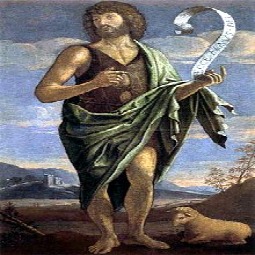Letter on Medjugorje Creates Shockwaves

A letter from the Congregation for the Doctrine of the Faith (CDF) concerning "the phenomenon of Medjugorje" has been sent to all of the bishops in the United States.
This letter created shockwaves among supporters of the six seers who began reporting visions of the Virgin Mary in Medjugorje (part of Yugoslavia) in 1981, as it appeared to affirm a new and more restrictive policy regarding participation in Medjugorje-related events.
The letter was occasioned by a series of public appearances involving Ivan Dragicevic, one of the six children. Dragicevic now has a residence in the United States, and he has been making public appearances, during which he reports receiving apparitions from the Blessed Mother.
The CDF was concerned that these appearances would cause "scandal and confusion" among the faithful, and so Archbishop Gerhard Müller, the prefect of the CDF, requested that a letter be sent to the U.S. bishops.
It was written by Archbishop Carlo Maria Viganò, the apostolic nuncio (ambassador) to the United States, and addressed to Msgr. Ronny Jenkins, the general secretary of the U.S. Conference of Catholic Bishops. The letter was then forwarded to each of the U.S. bishops.
Following this, Dragicevic’s scheduled public appearances for late October were canceled. However, the letter itself had broader implications. For some time, the CDF has been conducting an investigation of the Medjugorje phenomenon. The results of this investigation will eventually be presented to the Pope for his decision.
While the investigation is ongoing, a declaration made in 1991 by the bishops for the former Yugoslavia is still in force. This decree holds: "On the basis of the research that has been done, it is not possible to state that there were apparitions or supernatural revelations" at Medjugorje.
According to Archbishop Viganò’s new letter, the CDF "has affirmed that, with regard to the credibility of the ‘apparitions’ in question, all should accept the declaration."
It then draws the implication that "clerics and the faithful are not permitted to participate in meetings, conferences or public celebrations during which the credibility of such ‘apparitions’ would be taken for granted."
This statement produced a great deal of concern among Medjugorje supporters, who number in the millions worldwide.
The CDF had previously affirmed the Yugoslavian bishops’ declaration, and it had allowed pilgrimages of the faithful to Medjugorje.
However, according to a 1996 letter by Cardinal Tarcisio Bertone — then the secretary of the CDF — such pilgrimages could not be organized by parishes or dioceses if Medjugorje was not "understood as a place of authentic Marian apparitions."
The logic of this seems straightforward: If it is not possible to affirm authentic apparitions at Medjugorje, then Church authorities should not be presenting it as a place of authentic Marian apparitions.
The new letter appears to extend this reasoning to non-pilgrimage events, such as public appearances by the so-called Medjugorje seers.
It also now applies this reasoning to both "clerics and the faithful," on the grounds that "all should accept the declaration" regarding the apparitions.
The timing of the letter, dated Oct. 21, 2013, may also be significant. According to Archbishop Viganò, this letter reaffirms a policy announced in a previous letter, dated Feb. 27, 2013 — the day before Pope Benedict XVI’s resignation took effect.
It is easy to see how some on the American side may have queried the CDF as to whether this policy was still in effect in the wake of Pope Francis’ election.
As the head of the CDF, Archbishop Müller meets regularly with Pope Francis, and before sending a letter of this sort to all of the U.S. bishops, it would be expected that he would check with the Pope about whether the policy should be continued.
The fact that a letter reaffirming the policy was sent thus may indicate that Pope Francis has reviewed and confirmed the policy — at least for the time being. If so, that would not automatically mean that the final decision on Medjugorje will be negative.
Merely reaffirming an existing policy while the CDF’s investigation is under way does not tell us anything in particular about what the final judgment will be.
Although there are rumors about what Pope Francis thinks regarding Medjugorje — some claiming he has a positive view, some that he has a negative view — nothing clear and definitive is known on this matter.
Indeed, the Pope may not have a firm opinion at this point.
Both supporters and critics of Medjugorje should be prepared for a final decision that may not agree with their present views.
Neither supporters nor critics should allow their faith to be challenged if such a decision comes.
Our primary attachment must be to Christ and the public revelation he has given us.
While private revelations may be helpful, they must be kept secondary and must not be allowed to challenge our fidelity to Christ’s Church and its pastors.
Jimmy Akin, senior apologist
at Catholic Answers, is a
Register columnist and blogger.
- Keywords:
- Dec. 1-14, 2013
















